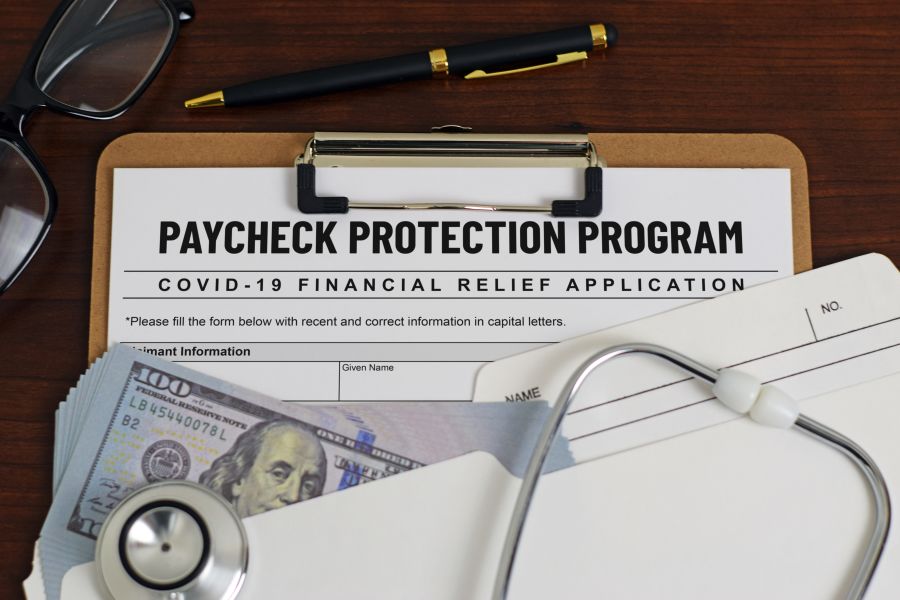Congratulations on receiving your Paycheck Protection Program (PPP) loan! We hope it provides much needed cash during these uncertain times. Now that you have the funds, here are some best practices for PPP loan forgiveness over the next 8 weeks to ensure maximum retention. Use the Funds for Forgivable Purposes Best practices for PPP loan forgiveness revolve largely on whether you use the money to pay forgivable expenses. These include: payroll costs (if you’re self-employed, these costs include the net profit amount from your business, as reported on your 2019 tax return), interest payments on mortgages incurred before 2/15/20, rent payments on leases dated before 2/15/20, and utility payments under service agreements dated before 2/15/20. However, according to the Small Business Administration (SBA), not more than 25% of...

(This is Blog Post #808)...
Every time your business interacts with customers is an opportunity to build trust. And it’s an opportunity you can’t afford to neglect. Look at customer data. When customers hand over personal and financial data to your company, they expect you to do everything in your power to protect it from hackers — as well as non-criminal third parties. If you don’t? Just look at some of the companies affected by major data breaches. Protect data and build trust with customers. Provide fraud notices Unless you run a cash-only business, you collect financial data from you customers every time you process transactions. If you offer credit accounts to business customers, you probably collect even more information. You’re obliged to ensure this data doesn’t fall into the hands of...
If you’re a parent, or if you’re planning on having children, you know that it’s expensive to pay for their food, clothes, activities and education. Fortunately, TCJA made changes to the Child Tax Credit, which is available for taxpayers with children under the age of 17, as well as a dependent credit for older children. Recent tax law changes Changes made by the Tax Cuts and Jobs Act (TCJA) make the child tax credit more valuable and allow more taxpayers to be able to benefit from it. These changes apply through 2025. Prior law: Before the TCJA kicked in for the 2018 tax year, the child tax credit was $1,000 per qualifying child. But it was reduced for married couples filing jointly by $50 for every $1,000 (or...
If you’re self-employed and work out of an office in your home, don't forget the availability of home office deductions. However, you must satisfy strict rules. If you qualify, you can deduct the “direct expenses” of the home office. This includes the costs of painting or repairing the home office and depreciation deductions for furniture and fixtures used there. You can also deduct the “indirect” expenses of maintaining the office. This includes the allocable share of utility costs, depreciation and insurance for your home, as well as the allocable share of mortgage interest, real estate taxes and casualty losses. In addition, if your home office is your “principal place of business,” the costs of traveling between your home office and other work locations are deductible transportation expenses,...
Businesses and fraud experts often face a long, arduous process when investigating any occupational fraud incident. When the fraud suspect is an executive . . . a member of upper management . . . it’s exponentially harder. In theory, investigating executives shouldn’t differ from the process of investigating rank-and-file employees. In reality, the authority and influence of an executive can slow — even shut down — a fraud investigation. You need a plan to prevent interference and facilitate the collection of evidence that can be used in court, if necessary. Human element The first step is to brief the executive’s chain of command. As soon as allegations surface, work with your company’s human resources and legal departments to make the suspect’s superiors aware of the situation. If you...
(This is Blog Post #803)...
Financial statement manipulation is the costliest type of occupational fraud. The latest Report to the Nations published by the Association of Certified Fraud Examiners found that the median loss from financial statement fraud was $800,000, compared to median losses of $114,000 for asset misappropriation and $250,000 for corruption. With any type of fraud, the sooner it’s detected, the more likely losses can be mitigated. The Beneish model helps detect earnings manipulation. As such, this is one tool management and fraud experts might use to assess the likelihood of earnings manipulation. M score The Beneish model measures the probability that a company’s revenue has been inflated and its expenses have been understated. The model generally computes an “M score” from comparisons between consecutive financial reporting periods of various...
Do you conduct your business as a sole proprietorship or as a wholly owned limited liability company (LLC)? If so, you’re subject to both income tax and self-employment tax. There may be a way to reduce tax with an S corporation. Self-employment tax basics The self-employment tax is imposed on 92.35% of self-employment income at a 12.4% rate for Social Security up to a certain maximum ($137,700 for 2020) and at a 2.9% rate for Medicare. No maximum tax limit applies to the Medicare tax. An additional 0.9% Medicare tax is imposed on income exceeding $250,000 for married couples ($125,000 for married persons filing separately) and $200,000 in all other cases. Similarly, if you conduct your business as a partnership in which you’re a general partner, in addition...
Married couples often wonder whether they should file joint or separate tax returns. When is married filing separate betrter? The answer depends on your individual tax situation. It generally depends on which filing status results in the lowest tax. But keep in mind that, if you and your spouse file a joint return, each of you is “jointly and severally” liable for the tax on your combined income. And you’re both equally liable for any additional tax the IRS assesses, plus interest and most penalties. This means that the IRS can come after either of you to collect the full amount. Although there are provisions in the law that offer relief, they have limitations. Therefore, even if a joint return results in less tax, you may want...
- 1
- 2
- 3
- 4
- 5
- 6
- 7
- 8
- 9
- 10
- 11
- 12
- 13
- 14
- 15
- 16
- 17
- 18
- 19
- 20
- 21
- 22
- 23
- 24
- 25
- 26
- 27
- 28
- 29
- 30
- 31
- 32
- 33
- 34
- 35
- 36
- 37
- 38
- 39
- 40
- 41
- 42
- 43
- 44
- 45
- 46
- 47
- 48
- 49
- 50
- 51
- 52
- 53
- 54
- 55
- 56
- 57
- 58
- 59
- 60
- 61
- 62
- 63
- 64
- 65
- 66
- 67
- 68
- 69
- 70
- 71
- 72
- 73
- 74
- 75
- 76
- 77
- 78
- 79
- 80
- 81
- 82
- 83
- 84
- 85
- 86
- 87
- 88
- 89
- 90
- 91
- 92
- 93
- 94
- 95
- 96
- 97
- 98
- 99
- 100
- 101
- 102
- 103
- 104
- 105
- 106
- 107
- 108
- 109
- 110
- 111
- 112
- 113
- 114
- 115
- 116
- 117
- 118
- 119
- 120
- 121
- 122
- 123
- 124
- 125
- 126
- 127
- 128
- 129
- 130
- 131
- 132
- 133
- 134
- 135
- 136











